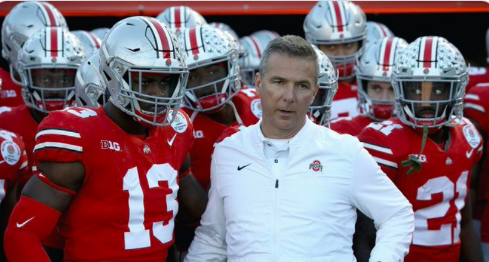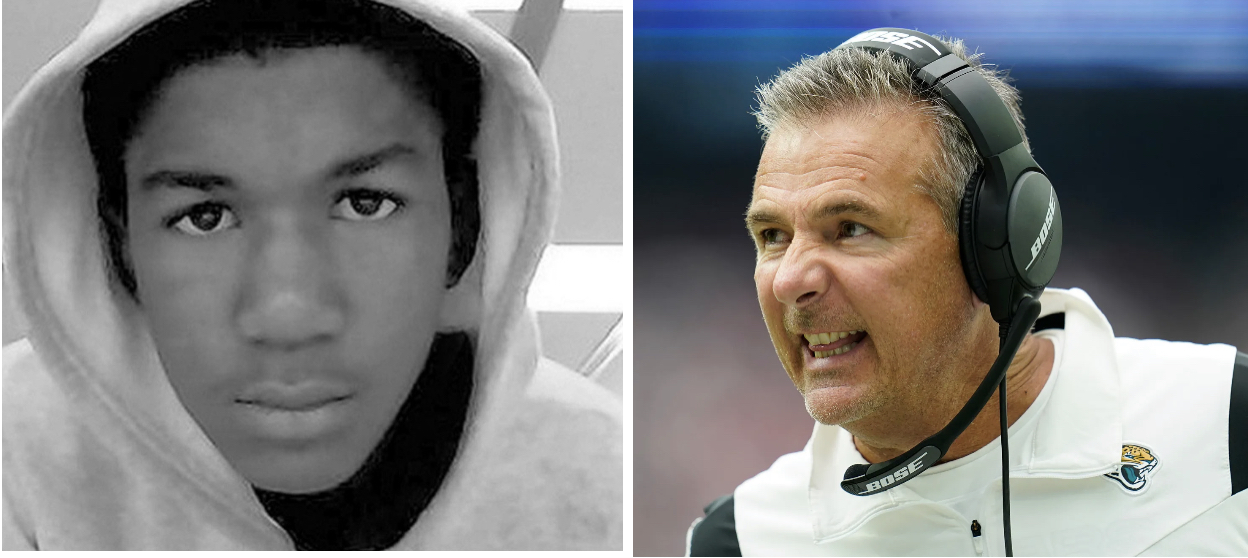“Social groups create deviance by making rules whose infraction creates deviance, and by applying those roles to particular people and labeling them as outsiders. From this point of view, deviance is not a quality of the act the person commits, but rather a consequence of the application by other of rules and sanctions to an 'offender.' The deviant is one to whom that label has been successfully applied; deviant behavior is behavior that people so label.” – Sociologist Howard Becker, “Outsiders” (1963)
A jury of six decided there was not enough evidence to support the claim that George Zimmerman either murdered or slaughtered Trayvon Martin on the night of February 26, 2012.
There was never a dispute as to whether Zimmerman pulled the trigger that took Martin’s life. Zimmerman admitted as much and it’s one of the few basic key facts known about the incident.
Aside from the fatal shooting, it became clear in this process that Martin, a barely 17-year-old black male coming from a convenient store after purchasing Skittles and Arizona tea, was followed by Zimmerman because the self-proclaimed neighborhood watchman profiled him as a criminal.
Recall that Martin, who had no history of burglary or any serious criminal activity, was considered by Zimmerman as one of those who “always gets away.” Zimmerman made up his mind early about Trayvon Martin and was undeterred in his pursuit of getting to the bottom of why exactly this peculiar black kid was roaming around his neighborhood.
Even when he was advised by an emergency operator not to pursue the alleged “suspect,” it wasn’t quite enough of a restraint for Zimmerman because he just knew the kid was up to no good.
Martin was immediately pegged as deviant, and the jury’s inability to convict Zimmerman of a crime reaffirms this view as still prevailing, despite no evidence to support it. The jury wasn’t entirely sure if Martin was indeed a criminal that Zimmerman was justified in reacting to, but that possibility was there for them.
It left reasonable doubt of the shooting being an actual crime, Zimmerman’s overzealous pursuit and obsession with protecting the neighborhood from whomever he perceived to not belong there notwithstanding.
The sad part about this besides the obvious is that we don’t have much of a handle on Martin’s level of self awareness. After all, how could we with him being dead and all?
Sociologists have long considered labeling to be a self-fulfilling prophecy that can influence the self-identity or behavior based on how an individual has been described or classified.
Take for example, I visited a friend last week who was supposed to come down from the third floor of the apartment complex and meet me near the stairs. While I waited outside, several tenants pulled up and had to pass where I was standing to get to the stairs.
I made the conscious effort to make sure they knew I was friendly and most importantly a non-threatening face. This wasn’t an absolute requirement, but being a black man with dreadlocks standing after sunset at the stairs of an area I don’t frequent made me self-conscious. Nervous that I was making people nervous.
I felt the need to make it clear that I wasn’t up to no good, simply because I don’t know the assumptions these people make, any more than they know of my criminal capabilities, or lack thereof.
Society taught me that, but only because I’ve lived just long enough to learn it. This labeling theory is not a new one.
What could have simply been a painfully eye-opening and sobering moment for the young Trayvon Martin to learn how he’s perceived in this country became a wasted opportunity when things escalated and turned tragic.
But perhaps Trayvon knew exactly why Zimmerman was following him, knowing he had done nothing wrong. Perhaps Trayvon knew that a stranger following him in dark, rainy weather conditions could only be someone who themselves was up to no good.
A profiler.
From a sociological view, Howard Becker noted 50 years ago that social groups apply deviant labels to outsiders. That’s what Trayvon Martin was on that particular night, visiting his father’s girlfriend’s residence.
If Martin did give Zimmerman a beat down as it appeared he did (we still don’t know who dropped the first lick and never will, which is why that shouldn’t have been a relevant point), sociologist Edwin Lemert of the 1950s would have considered Martin’s reaction as a secondary deviation.
That’s how those already profiled as deviants deal with being condemned, whether it’s justified or not.
From Lemert:
"His acts are repeated and organized subjectively and transformed into active roles and become the social criteria for assigning status…..When a person begins to employ his deviant behavior or a role based on it as a means of defense, attack, or adjustment to the overt and covert problems created by the consequent societal reaction to him, his deviation is secondary."
Zimmerman was looking for a confrontation of some sort, because with a gun attached, he went after someone he believed to be a criminal. Notice how in this process, not a lot has been said for Trayvon Martin’s right to defend himself, or how that fighting someone who follows you in the dark is not only justified, but perfectly reasonable and sane.
That’s because Martin, unable to speak for himself at this point, already had an assumed societal role as somehow misplaced. George Zimmerman, whether you want to make the thoughtless argument that he was part Hispanic and that this case was not race-related, was still part of the normal majority crowd that was “looking out for the neighborhood.”
If Zimmerman was truly looking out for the neighborhood, why didn’t he offer a ride to this guy who was clearly walking in the rain? He clearly had a gun to defend himself if it came down to it.
Canadian-born sociologist Erving Goffman, one of the leading contributors to the labeling theory in sociology, died a year before Zimmerman was born and long before Martin was even considered. But it’s almost like he could see this type of incident occurring.
This was one of his observations in Stigma: Notes on the Management of Spoiled Identity, published in 1963:
"When normals and stigmatized do in fact enter one another's immediate presence, especially when they attempt to maintain a joint conversational encounter, there occurs one of the primal scenes of sociology; for, in many cases, these moments will be the ones when the causes and effects of stigma will be directly confronted by both sides…”
p> That ongoing debate as to which guy was the aggressor, who was screaming on the audio tape, whether Zimmerman was defending himself while simultaneously harassing someone; all of the rhetoric reflects a societal view and all the Florida jury did was co-sign.



